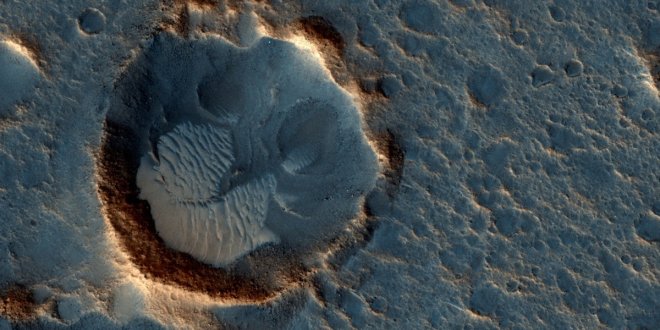
NASA and other space agencies have conducted numerous research on Mars through their space missions. These missions helped in improving our understanding of the red planet.The first successful Mars mission, Mariner 4 mission in 1965, of USA, opened a new chapter on the same.
Humans are now planning to start settlements on the red planet and certain space agencies have made it clear that they plan to send humans to Mars by 2022. NASA is taking the initiative for these future missions.
However, the universe being a vast expanse has numerous unknown and mysterious elements hidden in its nooks and corners. Some weird findings from Mars created huge uproar and excitement among the denizens of the Earth.
Face on Mars
People believed that Mars probably had an ancient civilization after seeing pictures similar to a human 'face' in the Cydonia region on the Martian surface.
NASA's Viking 1 spacecraft which was exploring Mars took the image of the face in 1976 while it was searching its sister ship Viking 2. People believed it to be the craftsmanship of the ancient civilization.Scientific explanations were not given along with the picture. Later NASA authorities published the picture with the caption "huge rock formation ... which resembles a human head ... formed by shadows giving the illusion of eyes, nose and mouth."
Some people still continued to believe it as the work of those residing in Mars. Another detailed image of the 'face' was taken in 1998 by the Mars Global Surveyor.
Stone Henge in Mars
The Curiosity Rover which was flying over Mars took images of a group of stones which were arranged in a circular pattern in August 2015. The stones were arranged in patterns similar to the stone henge in Wiltshire, England. The space enthusiasts called it as the 'Marshenge' and believed that alien creatures built it just as how stone henge was built on the Earth. Experts, however, said that this rock formation was a result of some natural process in Mars.
Floating spoon
The Curiosity's image of a 'floating spoon' in 2015 brought many speculations on Martian life. The picture of the spoon-shaped rock was captured by Curiosity on its 1,089th day on Mars.
"There is no spoon. This weird Mars feature is likely a ventifact- a rock shaped by wind" said the officials in NASA.
The alien enthusiasts and conspiracy theorists, however, cooked different stories on their own. The idea of tiny Martian women who preferred to eat from spoons is considered as one of the weirdest stories till date. Few other pictures were conjectured as cutleries, cheese pieces and chopsticks.
Lady on Mars
The image of a woman in Mars went viral on social media in 2015. The Curiosity captured an image similar to a woman on the red planet which led to various speculations. Another picture looking like a crab also caught the attention of the audience. This led to a huge apprehension that life prevails in Mars just as it does on Earth. Later, NASA authorities said that they were mere illusions created by the wind and the shadows in that region.
Star Wars' Star Destroyer
The Curiosity rover captured an image which looked like 'Star Destroyer' from the Star Wars series in 2015.
"One of the best things we found is that Mars could support life, (but) if anything we think it's microbial life that's possible at this time" NASA scientists suggested.
The scientists said that the trick of mind leads people to evaluate pictures as true when they are not. They named this as Pareidolia which causes people to see familiar things such as faces or a particular person in strange places.
However, Scott C Waring, editor of UFO Sightings Daily posted on his website, "The craft is only about 2.5-3 meters across, so it probably only held a few passengers.... So we can conclude that his ship could carry about 20-40 passengers."
Pyramids
Another image on May 7, 2015, captured objects similar to pyramids in them. The alien conspiracists believed the objects to be the remnants of an ancient civilization on the planet. They said that the objects had "near-perfect design and shape."
"It is probably a volcanic rock (like most rocks that we've seen with rovers on Mars), and just like many volcanic rocks on the Earth, many volcanic rocks on Mars break and cleave in very sharp, angular ways" NASA further stated.









